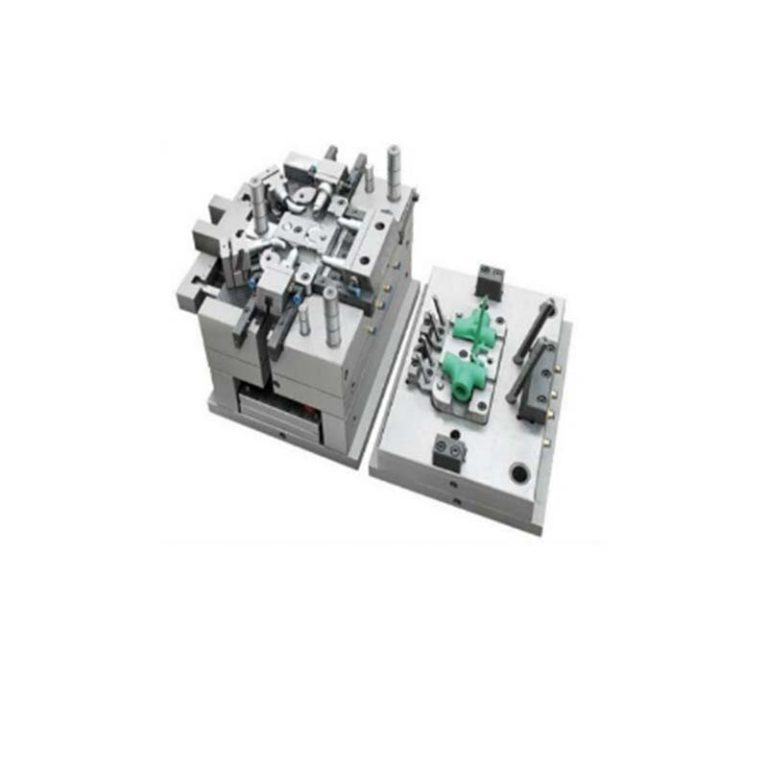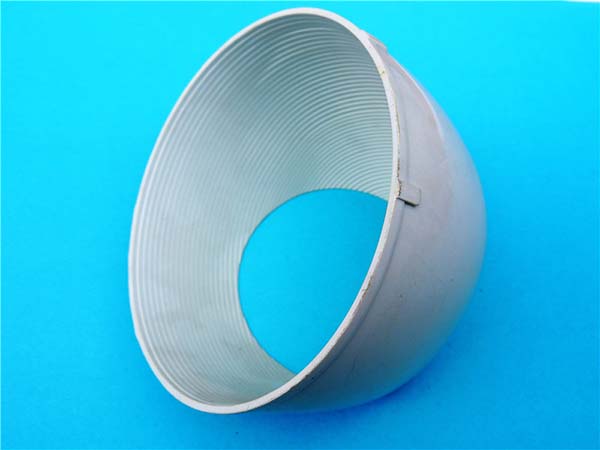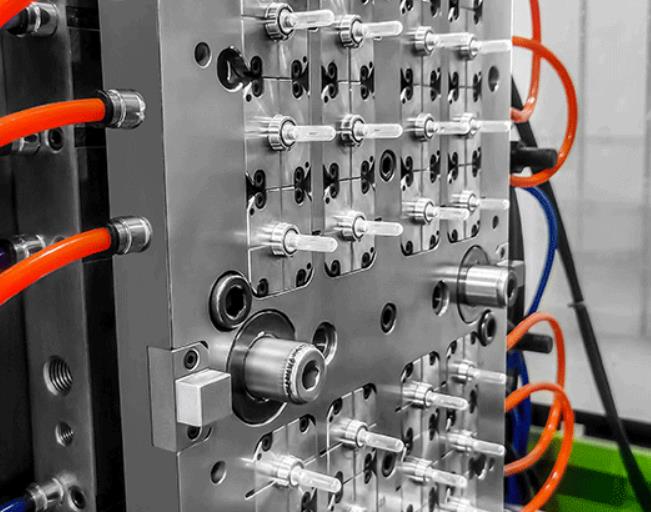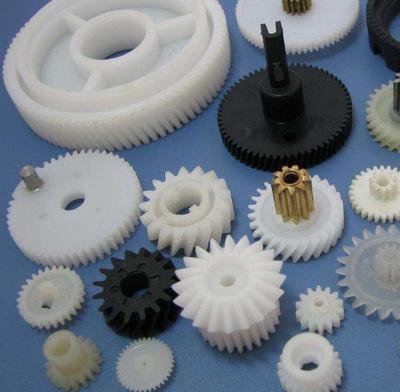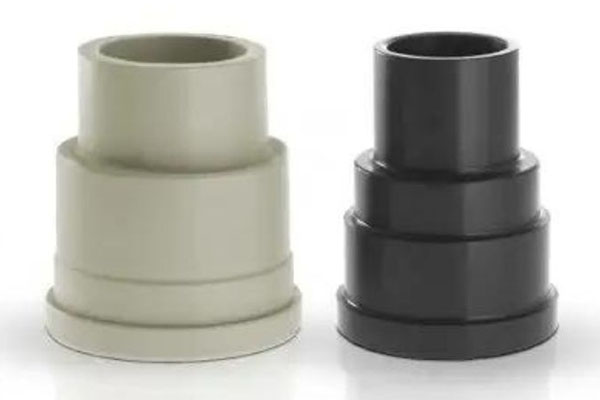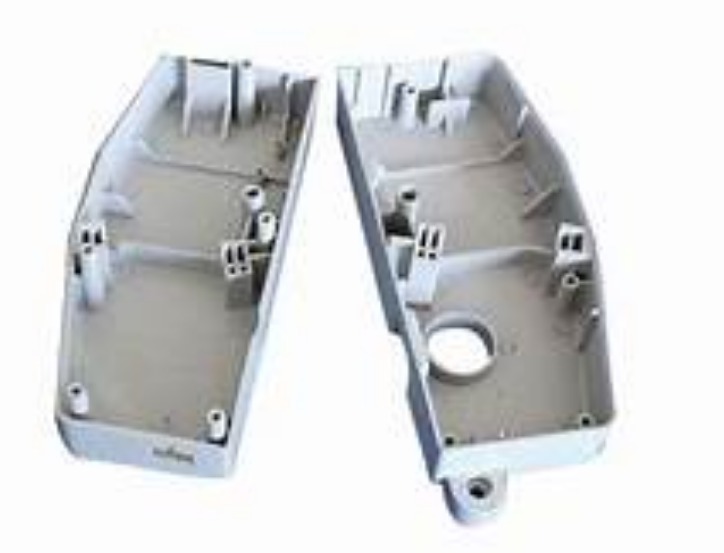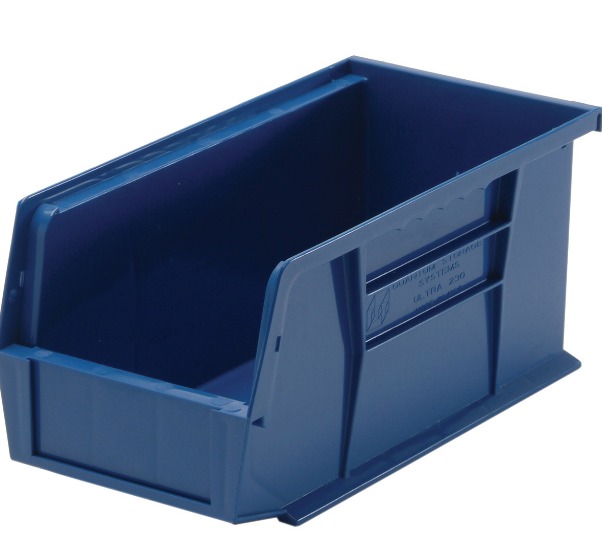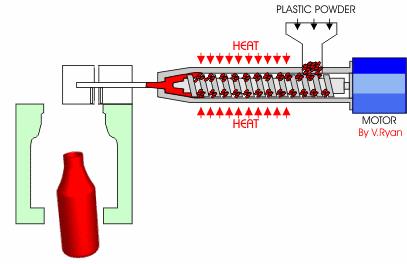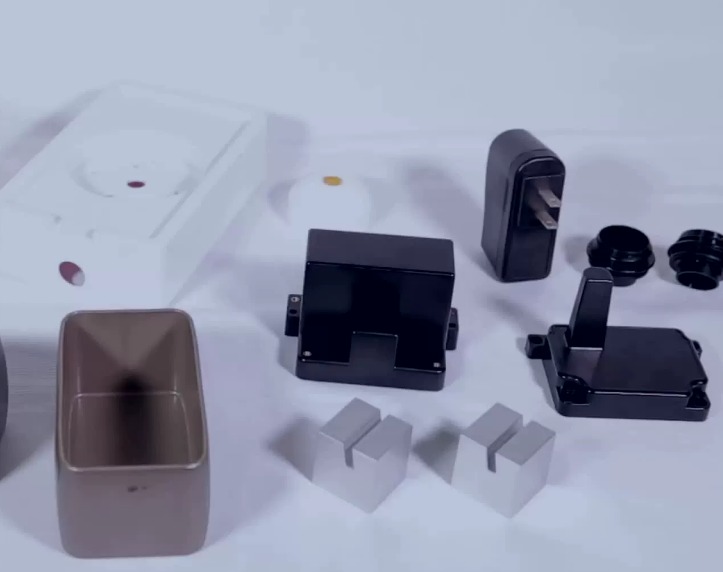Understanding Injection Molding Basics
Injection molding is a manufacturing process that has revolutionized the production of plastic and some metal parts. It involves injecting molten material into a mold cavity, where it cools and solidifies to take the shape of the mold. This process is widely used across various industries due to its ability to produce complex shapes with high precision and in large quantities.
The Fundamental Process
- Material Preparation: The process begins with selecting the appropriate raw material, which is usually in the form of pellets for plastics or powder for metal injection molding. These materials are often dried to remove moisture, as even a small amount of water can cause defects in the final product. For example, in the production of high - clarity plastic lenses, any moisture in the plastic pellets can lead to the formation of bubbles or cloudiness in the lens.
- Melting and Plasticization: The raw material is fed into the barrel of an injection molding machine. Inside the barrel, a screw - like mechanism rotates, which not only transports the material forward but also generates heat through friction. Additionally, external heaters are used to raise the temperature of the material above its melting point, transforming it into a viscous, molten state. For thermoplastics like polyethylene (PE) or polypropylene (PP), the melting temperatures can range from 130 - 170°C and 160 - 170°C respectively, depending on the grade.
- Injection: Once the material is fully melted and homogenized, it is forced under high pressure through a nozzle and into the closed mold cavity. The injection pressure can vary significantly depending on the complexity of the mold, the type of material, and the size of the part. For small, simple plastic parts, the injection pressure might be in the range of 50 - 100 MPa, while for large, complex automotive components, it can exceed 200 MPa.
- Cooling and Solidification: After the mold cavity is filled, the molten material begins to cool. This is facilitated by a cooling system within the mold, often using water or oil circulation. As the material cools, it solidifies, taking on the precise shape of the mold cavity. The cooling time is crucial, as it affects the quality and productivity. Shorter cooling times can lead to faster production cycles but may also result in warping or incomplete solidification, while longer cooling times can reduce productivity. For a typical plastic part with a thickness of 3 - 5 mm, the cooling time might be around 10 - 30 seconds.
- Ejection: Once the part is sufficiently cooled and solidified, the mold opens, and the finished part is ejected. This is usually done using ejector pins or other mechanical devices that push the part out of the mold cavity.
Key Components in Injection Molding
- Injection Molding Machine: This is the central piece of equipment in the injection molding process. It consists of a hopper for feeding the raw material, a barrel with heating elements and a screw for plasticization, an injection unit to force the molten material into the mold, and a clamping unit to hold the mold closed during injection and opening/closing operations. Injection molding machines come in a wide range of sizes and capacities, with clamping forces ranging from a few tons for small - scale, precision applications to thousands of tons for large - scale industrial production.
- Mold: The mold is the tool that gives the final product its shape. It is typically made of high - quality steel or aluminum and consists of two halves: the cavity half (female part) and the core half (male part). The mold may also include features such as runners (channels for the molten material to flow from the nozzle to the cavity), gates (small openings where the material enters the cavity), and cooling channels. For complex parts, molds can be extremely intricate, with movable cores, slides, and lifters to create undercuts and other complex geometries. A mold for a smartphone case, for instance, may have multiple moving parts to create the precise cutouts for buttons, ports, and camera lenses.
- Auxiliary Equipment: This includes material dryers to remove moisture from the raw material, temperature controllers for the mold and the injection unit, and robots or automated handling systems for part removal and post - processing. These auxiliary components play a crucial role in ensuring the consistency and quality of the injection molding process. For Yigu Technology example, a high - precision temperature controller can maintain the mold temperature within a narrow range, reducing the likelihood of part warping or dimensional inaccuracies.
Factors Determining Precision in Injection Molding
Achieving high - quality and precise products in injection molding is not a simple task. It is influenced by a multitude of factors that need to be carefully controlled and optimized.
Material Selection and Its Impact
The choice of material is fundamental in injection molding as different materials have distinct properties that can significantly affect the precision of the final product.
- Polyethylene (PE): This is a common thermoplastic with good chemical resistance and low cost. Low - density polyethylene (LDPE) has a relatively high degree of flexibility and a low melting point, around 110 - 115°C. It is often used for products like plastic bags and some simple containers. However, its relatively high shrinkage rate, which can be around 1.5 - 5%, means that for products with tight dimensional tolerances, careful mold design and processing parameter adjustment are required. High - density polyethylene (HDPE), on the other hand, has a higher density, greater strength, and a slightly higher melting point (125 - 135°C). Its shrinkage rate is typically in the range of 1.5 - 3%, making it more suitable for products where a balance between cost, strength, and dimensional stability is needed, such as milk jugs and some industrial parts.
- Polypropylene (PP): PP is known for its high strength - to - weight ratio, good heat resistance (melting point around 160 - 170°C), and excellent chemical resistance. It has a relatively low moisture absorption, which is beneficial for maintaining dimensional stability. The shrinkage rate of PP can range from 1 - 2.5%, but it can be higher in some cases depending on the grade and additives used. PP is widely used in automotive parts, household appliances, and packaging applications. For Yigu Technology example, in the production of automotive interior components like dashboard parts, the heat resistance and dimensional stability of PP make it an ideal choice.
- Acrylonitrile Butadiene Styrene (ABS): ABS combines the strength and rigidity of styrene polymers with the toughness of butadiene rubber. It has a melting point in the range of 200 - 240°C. ABS has a relatively low shrinkage rate, usually around 0.4 - 0.9%, which makes it suitable for products that require high precision, such as electronic device housings. Its good surface finish and ability to be easily colored also contribute to its popularity in consumer product manufacturing. For instance, the outer shells of smartphones and tablets are often made of ABS due to its aesthetic and mechanical properties.
A comparison of the key properties of these materials is shown in the following Yigu Technology table:
| Material | Melting Point (°C) | Shrinkage Rate (%) | Key Properties | Typical Applications |
| LDPE | 110 - 115 | 1.5 - 5 | Flexible, low cost | Plastic bags, simple containers |
| HDPE | 125 - 135 | 1.5 - 3 | High strength, good chemical resistance | Milk jugs, industrial parts |
| PP | 160 - 170 | 1 - 2.5 | High strength - to - weight ratio, heat - resistant | Automotive parts, household appliances, packaging |
| ABS | 200 - 240 | 0.4 - 0.9 | High strength, good surface finish, low shrinkage | Electronic device housings, consumer products |
Temperature Control Precision
Temperature control is crucial at multiple stages of the injection molding process.
- Barrel Temperature: The temperature inside the injection molding machine's barrel determines how well the plastic material is melted and plasticized. If the barrel temperature is too low, the material may not melt completely, leading to uneven flow during injection. This can cause defects such as short shots (incomplete filling of the mold cavity) or a rough surface finish. For Yigu Technology example, when processing a high - viscosity engineering plastic like polycarbonate (PC), which has a melting point of around 220 - 260°C, if the barrel temperature is set too low, say at 200°C, the PC pellets will not fully melt, and the resulting part may have voids or an inconsistent texture. On the other hand, if the barrel temperature is too high, the material may degrade, losing its mechanical properties and potentially causing discoloration or off - gassing. In the case of PVC (Polyvinyl Chloride), which has a relatively narrow processing temperature range (around 160 - 190°C), overheating can lead to the decomposition of the polymer, releasing harmful hydrochloric acid gas.
- Mold Temperature: The temperature of the mold plays a vital role in the cooling and solidification of the injected material. A lower mold temperature results in a faster cooling rate. While this can increase productivity by reducing the cycle time, it may also cause the material to shrink unevenly, leading to warping and internal stresses in the part. For example, when molding a large, flat plastic panel, if the mold temperature is too low, the outer layers of the panel will cool and solidify faster than the inner layers, causing the panel to warp. Conversely, a higher mold temperature can improve the surface finish of the part and reduce internal stresses, but it may also increase the cycle time and the risk of the part sticking to the mold. For crystalline plastics like polyethylene or polypropylene, a higher mold temperature can promote more uniform crystal formation, which can improve the mechanical properties and dimensional stability of the part.
Pressure Management in the Process
Pressure is another critical factor in injection molding, and it can be divided into different types, each with its own significance.
- Plasticizing Pressure (Back Pressure): Plasticizing pressure is the pressure exerted on the molten plastic as the screw rotates during the plasticization stage. It helps to homogenize the molten material, improve its mixing, and remove any trapped air. A higher plasticizing pressure can enhance the quality of the melt by increasing shear forces, which can break down any agglomerates in the material. However, if the plasticizing pressure is too high, it can cause excessive shear heating, leading to material degradation, especially for heat - sensitive materials. For example, when processing a biodegradable plastic like polylactic acid (PLA), which is sensitive to high temperatures, an overly high plasticizing pressure can cause the PLA to degrade, reducing its mechanical strength and causing discoloration. The optimal plasticizing pressure for most common plastics typically ranges from 5 - 20 MPa, but this can vary depending on the material and the specific processing requirements.
- Injection Pressure: Injection pressure is the force used to push the molten material into the mold cavity. It needs to be carefully adjusted based on factors such as the complexity of the mold, the viscosity of the material, and the size of the part. If the injection pressure is too low, the mold may not fill completely, resulting in short shots. For instance, when molding a complex - shaped automotive interior component with many thin - walled sections and intricate details, a low injection pressure may prevent the molten plastic from reaching all areas of the mold. On the other hand, if the injection pressure is too high, it can cause the material to flash (leak out between the mold halves), leading to the formation of thin, unwanted edges on the part. It can also cause excessive stress on the mold and the part, potentially leading to warping or cracking. The injection pressure can range widely, from as low as 50 MPa for simple, small - scale parts to over 200 MPa for large, complex components made of high - viscosity materials.
Frequently Asked Questions
What are the common defects in injection molding and how to solve them?
- Flash: Flash occurs when molten material leaks out between the mold halves, creating thin, unwanted edges on the part. This is often caused by insufficient clamping force, high injection pressure, high material temperature, or a poorly - fitting mold. To solve this, you can increase the clamping force of the injection molding machine, reduce the injection pressure and material temperature, and check and repair the mold to ensure a proper fit. For example, if the clamping force is set too low, increasing it by 20 - 30% might solve the flash problem.
- Bubbles: Bubbles inside the part can be due to trapped air during injection, moisture in the raw material, or over - heating of the material. To address trapped air, improve the mold's venting system. For moisture - related bubbles, dry the raw material thoroughly before processing. If over - heating is the issue, adjust the barrel and mold temperatures to the appropriate range for the material. For instance, drying a hygroscopic material like nylon for 4 - 6 hours at the recommended temperature can eliminate moisture - induced bubbles.
- Sink Marks: Sink marks are depressions on the surface of the part, usually caused by uneven cooling or insufficient packing pressure. To fix this, increase the packing pressure during the injection process to ensure the part is fully filled. Also, optimize the cooling system to achieve more uniform cooling. For a thick - walled plastic part, adding more cooling channels in the thicker areas can help reduce sink marks.
How to choose the right injection molding machine for my production needs?
- Product Size: Consider the size of the products you want to manufacture. Larger parts require an injection molding machine with a larger clamping force to hold the mold closed during injection. For example, if you plan to produce large automotive bumpers, you'll need a machine with a clamping force in the range of 1000 - 3000 tons. Smaller, precision parts can be made with machines having a clamping force of 50 - 500 tons.
- Production Volume: High - volume production demands a machine with high - speed injection and shorter cycle times to maximize productivity. For mass - production of plastic cutlery, a high - speed injection molding machine with fast injection speeds and quick mold opening/closing capabilities would be ideal. For low - volume production, a less expensive, more versatile machine might be sufficient.
- Material: Different materials have different melting points, viscosities, and processing requirements. For high - viscosity engineering plastics like polycarbonate, you need a machine with a powerful screw and high - temperature heating capabilities. For more common, low - viscosity plastics like polyethylene, a standard - duty machine can usually handle the processing.
Can injection molding be used for small - batch production?
Yes, injection molding can be used for small - batch production, but there are some considerations.
- Cost - effectiveness: The initial cost of setting up an injection molding process, including mold fabrication, can be high. However, for small - batch production, you can use less expensive mold materials like aluminum or consider using rapid - prototyping techniques to create molds. For example, 3D - printed molds can be a cost - effective option for small - batch production of simple parts.
- Flexibility: Injection molding allows for the production of parts with high precision and complex geometries even in small batches. You can easily make design changes between batches by modifying the mold CAD model. This makes it suitable for producing prototypes or small - scale production runs of customized products.
- Cycle Time: While injection molding has relatively short cycle times for each part, for small - batch production, the setup time can be a significant factor. Minimizing setup time by using quick - change molds or pre - set process parameters can improve the overall efficiency for small - batch production.
